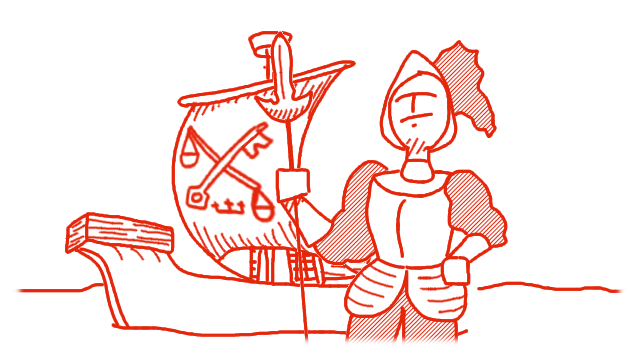Showcase > Narrative Design/Writing >
Crisis At Howelton | Play Online
Fantasy adventures in auditing.
Crisis at Howelton is a text adventure made using Twine.
Set in the high-fantasy world of Corvana, the player assumes the role of an agent for the New Relquan Trade Company, sent to investigate the productivity of one of their colonies. While the condition of the colony is otherwise dire, the colonist farmers also tell of a murderer terrorising them. The agent is not obligated to investigate, instead sent only to assemble a report of the colony’s general condition.
I came up with Crisis' design while playing Cosmology of Kyoto, a game with very interesting open-world exploration. In Cosmology, players traverse through the Japanese city of Kyoto circa 1000 AD. Each encounter is largely isolated, and there are few interactions that have consequences in others, intended to be an educational experience that showcased a single legend or historical event.
Where I wanted Crisis to be different was to have the order that players engage with these encounters to influence options in further encounters. While players have a similar way of wandering this town and meeting its occupants like in Cosmology, most emphasis is placed in character conversations, as I dislike text-adventures that have complex navigation with no graphical clues or visual interface.
Another inspiration was Paradise Killer, an investigation game. I liked Paradise Killer's structure, where the player can go to the investigation's verdict at any point they choose (even straight after being briefed), the outcome of which depends on how thouroughly the player conducted their interviews and how many clues were found.
In Crisis at Howelton, there are four main characters you can talk to in the colony: an old man, a drunk, the colony factor, and the guard captain. Each will have their own insights, but the player can use what they've learned from earlier conversations to ask characters more questions.
The player also has some agency in their dialogue choices, and can opt to be a more compasionate character or really lean into the role of a company bean-counter. Both will yeild different insights for the player, and add some flavour to the player character.
Postmortem
Compared to my outline docs and plans, Crisis came out alright. However, I severely underestimated how complex small insights would have on things I would have to keep track of. A single piece of trivia would have lots of small implications in other conversations. Keeping track of these tidbits in already-dense dialogue branches was difficult, and gave a poor development efficiency.
Another issue were my planning priorities and writing style. In my planning, I limited myself to four characters so I could reduce the amount of work making their stories cross over to each other. However, apart from the murders in the colony, I had no idea what I would do for the other insights the player would discover. I already had a good idea of what the characters would be like going into the project, but as I wrote them, a lot of ideas came out. Before I knew it, there were lots of those tiny trivia tidbits that needed to be accounted for in other conversations.
If I was to revisit this kind of design at this scale, I would probably plan out the different pieces of knowledge the player can find out first, and then the characters. What I ended up doing for Crisis' planning was putting my characters in a room together to create drama and issues, ad hoc. For a larger and more complex project, that might be a viable approach, but for Crisis it ended up adding a lot of work, especially between characters like the factor and captain.
Despite this, I still like how I had written the characters and how they came out. Some players brought up their own theories and interpretations of characters that never crossed my mind while writing them.
Players also liked how options would change depending on what you had learned from another character (I was especially happy when an early playtester picked up on how the option for investigating the factor's mansion would change if you actually knew that it was where the factor lived).
As such, it does come across as being a story with some neat reactions and interactions, but not a lot of content when playing through. And as mentioned, it had poor developer effort economy on interactions that would last a second for the player. Nonetheless, I think it's an interesting design that would work well to scale up into a visual novel or other interactive medium.